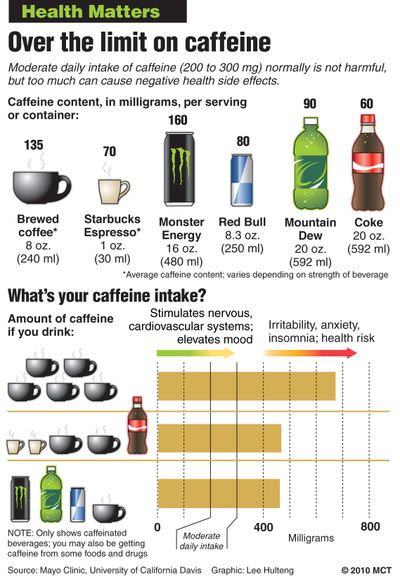Investigation dampens Monster’s energy buzz

NEW YORK (AP) — As energy drinks continue to surge in popularity, the disclosure by Monster Beverage Corp. that it’s being investigated is the latest signal that the high-octane industry is coming under sharper scrutiny.
The Corona, Calif.-based company said in a filing with the U.S. Securities and Exchange Commission on Thursday that it received a subpoena last month from an unidentified state attorney general’s office concerning the advertising and ingredients of its energy drinks.
The disclosure comes at a time when concerns over energy drinks have intensified.
Energy drinks remain a tiny part of the carbonated soft drinks market, representing just 3.3 percent of sales volume, according to the industry tracker Beverage Digest. But while soda consumption has flagged in recent years, energy drinks are growing by leaps and bounds.
Last year, sales volume for energy drinks rose by nearly 17 percent, with the top three companies — Monster, Red Bull and Rockstar — each logging double-digit gains, according to Beverage Digest. The drinks are often marketed at sporting events such as surfing and skateboarding, popular among younger people.
The levels of caffeine in the drinks have prompted concerns. Although the U.S. Food and Drug Administration caps the amount of caffeine in soda to 0.02 percent, there is no such limit for energy drinks.
“The FDA could easily say energy drinks are soft drinks,” said Michael Jacobson, executive director of the Center for Science in the Public Interest, which advocates for food safety. But he noted that the FDA cap was established about 60 years ago, long before energy drinks came to the market.
In general, energy drinks can contain more than three times as much caffeine as soda, Jacobson said. That could be problematic for younger consumers who may guzzle them without realizing how much caffeine they’re consuming.
The other risk is that kids would drink it at parties along with alcohol, he said.
As for the other ingredients energy drinks often tout — such as taurine or B vitamins — Jacobson said it’s mostly for marketing purposes and that they serve no real function. “They say it serves as a detoxifying agent or that it improves mental performance,” he said. “That’s malarkey.”
In its regulatory filing Thursday, Monster provided few details about the investigation, saying only that it was in the early stages. The company said it did not know whether any action would be taken or whether its business could be significantly impacted.
In a note to investors, Stifel analyst Mark Astrachan said that his understanding was that Monster was not alone in the receiving the subpoena in July, suggesting other energy drink companies may be involved as well.
A representative for Red Bull, the nation’s second-biggest energy drink maker by volume, said the company does not comment on legal matters. A representative for Rockstar, the third-largest energy drink maker, could not be reached. A representative for Monster declined to comment beyond what was disclosed in the filing.
Last year, Monster had a 35 percent share of the energy-drink market, while Red Bull had 30 percent and RockStar had 19 percent, according to Beverage Digest.
The investigation disclosed by Monster is just the latest red flag for the industry. In April, Sen. Dick Durbin, D-Ill., called on the federal Food and Drug Administration to investigate the industry, noting that the high levels of caffeine and stimulating additives in the drinks could be dangerous for younger consumers. The letter came after a 14-year-old Maryland girl died of a cardiac arrhythmia after drinking two 24-ounce cans of Monster energy drinks in a short time.
In May, the FDA sent a letter to Rockstar noting that its Coffee & Energy drinks contain Ginkgo biloba, an unapproved food additive. The agency noted that RockStar labels its drinks dietary supplements, yet markets them as conventional beverages.
In the past two years, Monster’s shares have more than tripled, from about $22 and hit a high of about $78 in June. On Friday, the shares were down 8 percent at $56.09.